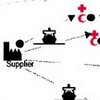
Tag Archives: supply chain disruption

Contingent flexibility
Less cost and less disruptions?
If the UK goes cold, blame me
No grit No roads No show?
Happy Holidelays!
Dignitary Visits and Supply Chain Disruptions
Mitigating supply chain disruptions
Supply, Demand, and … “Miscellanous” Risk?
Bad locations = bad logistics?
Sheffi’s Resilient Enterprise and supply chain risk
What’s so special about this Paul Kleindorfer?
Catastrophic events in supply chains
Fragility and sustainability: emerging research areas?
Lean logistics = risky logistics?
Avbrudd – Forsyningskjedens mørke side
For my English readers:
This is an interview with me in a Norwegian trade journal for Logistics Management.